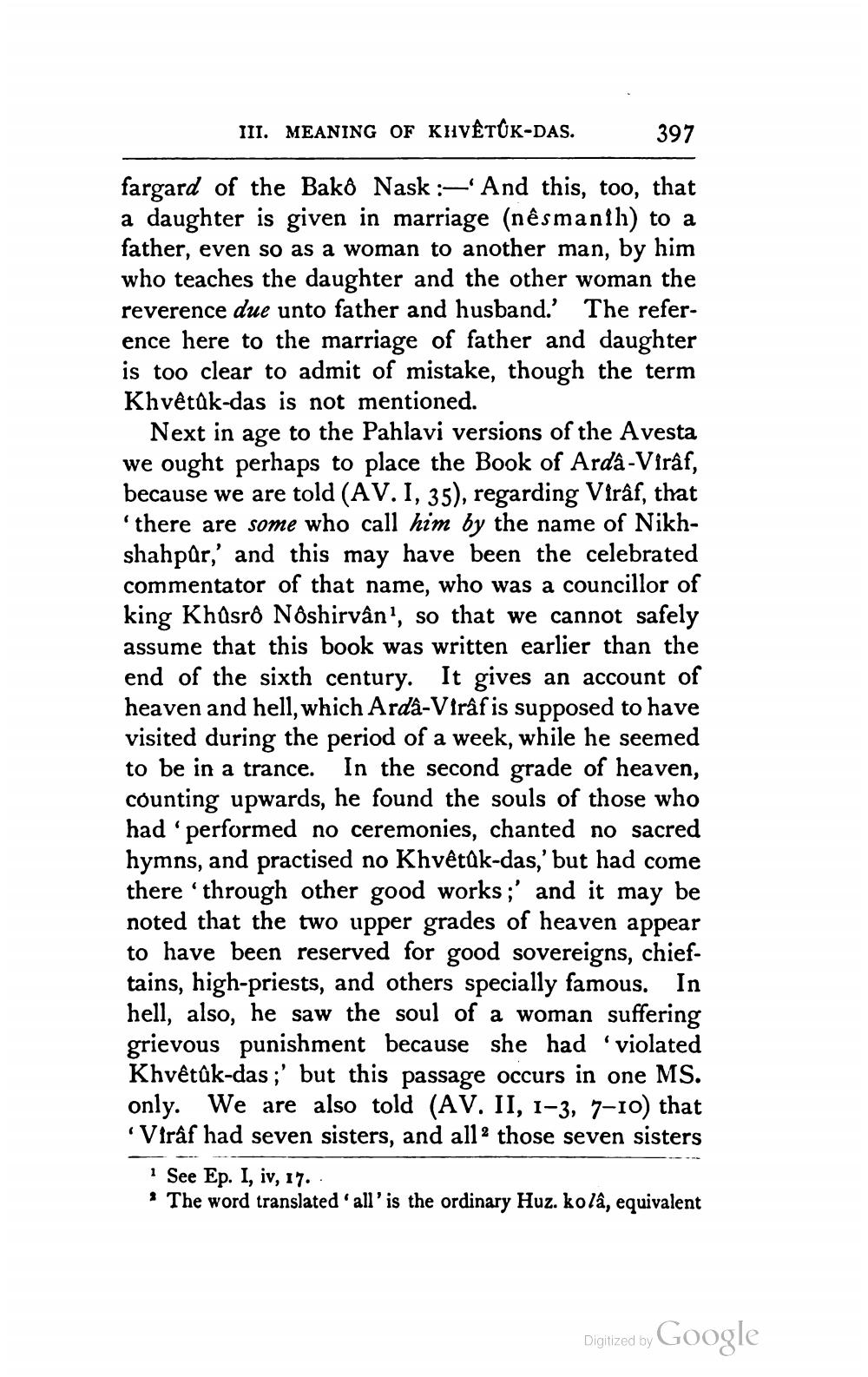________________
III. MEANING OF KHVÊTÜK-DAS.
397
fargard of the Bakó Nask :— And this, too, that a daughter is given in marriage (nêsmanih) to a father, even so as a woman to another man, by him who teaches the daughter and the other woman the reverence due unto father and husband.' The reference here to the marriage of father and daughter is too clear to admit of mistake, though the term Khvêtûk-das is not mentioned.
Next in age to the Pahlavi versions of the Avesta we ought perhaps to place the Book of Arda-Virâf, because we are told (AV. I, 35), regarding Virâf, that 'there are some who call him by the name of Nikhshahpûr,' and this may have been the celebrated commentator of that name, who was a councillor of king Khásrð Nôshirvân', so that we cannot safely assume that this book was written earlier than the end of the sixth century. It gives an account of heaven and hell, which Arda-Virâf is supposed to have visited during the period of a week, while he seemed to be in a trance. In the second grade of heaven, counting upwards, he found the souls of those who had 'performed no ceremonies, chanted no sacred hymns, and practised no Khvêtûk-das,' but had come there through other good works;' and it may be noted that the two upper grades of heaven appear to have been reserved for good sovereigns, chieftains, high-priests, and others specially famous. In hell, also, he saw the soul of a woman suffering grievous punishment because she had 'violated Khvêtûk-das;' but this passage occurs in one MS. only. We are also told (AV. II, 1-3, 7-10) that Viráf had seven sisters, and alla those seven sisters
See Ep. I, iv, 17. * The word translated all'is the ordinary Huz. kolâ, equivalent
Digitized by Google




